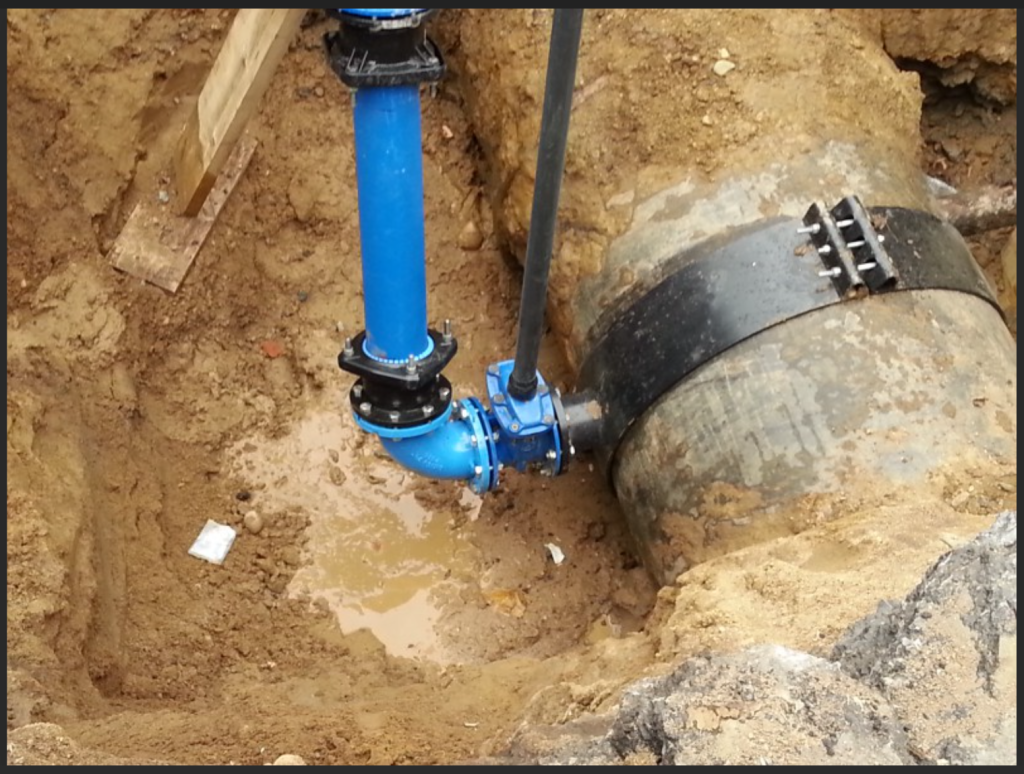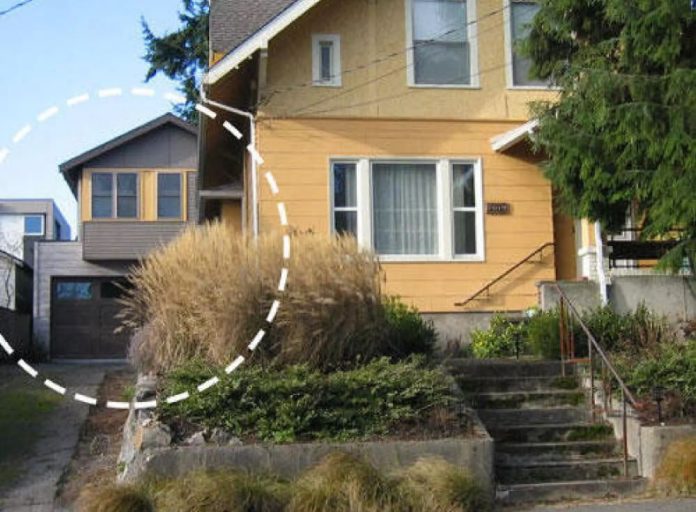
Seattle Public Utilities is using “No Tap” water mains to extort homebuilders for system upgrades.
The gauntlet created by Seattle Public Utilities (SPU) for access to the public water system is taking a toll on new housing, including accessory dwelling units (ADU) infill projects. Only 37% of ADU permits submitted to Seattle between 2017 and 2021 resulted in a completed building, according to Alex Czarnecki, founder of Cottage, a platform that assists with ADU construction.
A factor contributing to the dismal permit success rate are restrictions for access to existing water mains in the City. This is due to two project-crushing definitions tucked away in a SPU administrative document under the innocuous sounding terms “No Taps Water Main” and “Obsolete Distribution Water Main.” The document dates back to 2021, but it is being revised this year to be even more limiting.
Under SPU’s revised Director’s Rule WTR-440, the definition of “no-tap“ includes “any water main designated with a “No Tap” restriction by SPU.” This is incredibly nondescript. It can randomly be applied to any water main at will by SPU.
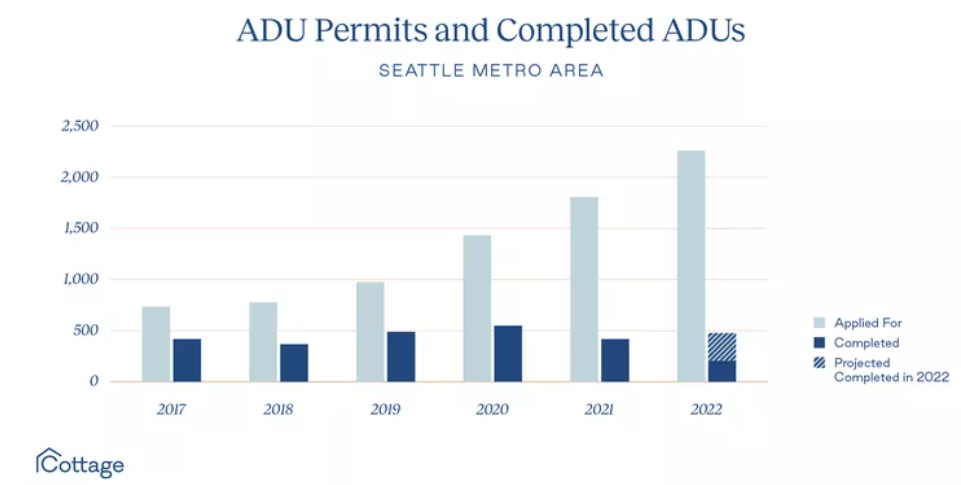
The other “obsolete” definition is similarly vague and can be used by SPU to conclude any given water main within the City as “no tap water main.” Terms include inadequate diameter, excessive corrosion, inadequate material, and compromised structural properties. The meanings of each of these leads to capricious and arbitrary determinations by SPU that restrict connection to the existing water main system in Seattle. Moreover, if the city has distribution pipes with excessive corrosion and substandard materials, it seems immediate maintenance to correct these conditions is required rather than penalizing new projects for these deficiencies.
Director’s Rules are administrative rules adopted according to the Administrative Code (Seattle Municipal Code Chapter 3.02). The purpose of Director’s Rules is to aid in the implementation of the Seattle Municipal Code. Director’s Rules are not a vehicle to create mandates and definitions that are not supported by code. However, that is what these two definitions did with requirements not supported by City code.
SPU is treading into the territory of the City Council via the “on-the-fly” creation of these broad definitions. The vetting and procedural steps required within the City Council legislative process have been bypassed, thus resulting in these insidious definitions. These definitions are being used by SPU to issue Water Availability Certificates that deny water service to new housing projects. Ironically, the Water Availability Certificate (WAC) issued by SPU has effectively become a Water Unavailability Certificate.
Furthermore, the definitions are in opposition to SPU’s own “SPU Cares Principles” affordability and accountability “to ensure utility services are available to everyone.”
As a practicing civil engineer with over 25 years of water system design experience for new housing projects, outside of Seattle I have never encountered a requirement for a capital improvement water system upgrade where there is no direct nexus between the demands of the project and the upgrade being required. Water purveyors in cities like Mukilteo and Alderwood routinely provide Water Availability Certificates with fewer hoops to jump through and no mandates for improvements to the public system as a condition of access to existing water mains.
However, a typical Seattle Water Availability Certificate comes with a condition that a costly and significant water system upgrade is required in order to have access to domestic water. SPU reverts to their created restrictive mandates in their administrative document WTR-440 to assert their position. By asserting a water main is a “no-tap main” SPU can then use another created condition found within WTR-440 that states, “A water main extension or other water system improvement is required in order to receive an Approved WAC.”
Decisions are made based upon the interest of the utility
A very troubling statement within the WTR-440 conveys a one-sided, self-serving position that is contrary to SPU’s duty to protect the interests of the public. Clearly stated is that decisions are made based upon the best interests of the utility.

This is a “tail-wagging-the-dog” scenario, and is the complete opposite of the reason public water purveyors exist in the first place. Their very existence is to serve the public interest, not the interests of the agency. This sentence speaks volumes to the biased nature and one-sided groupthink that seems to have permeated the culture within SPU.
How SPU crushes housing projects
One example of how SPU strings-along a permit applicant through their unsavory web is demonstrated by an abandoned project I worked on at 2322 21st Avenue S, as I laid out in a previous article. Located within the North Rainier Urban Village and west of Rainier Avenue S, the proposed project would have removed one house to construct six total dwelling units using the 2019 ADU/DADU update to the City of Seattle code.
The initial Water Availability Certificate (WAC) Issued from SPU stated that new water service to the project was not available because the water line in the street fronting the project was determined to be not suitable for tapping.
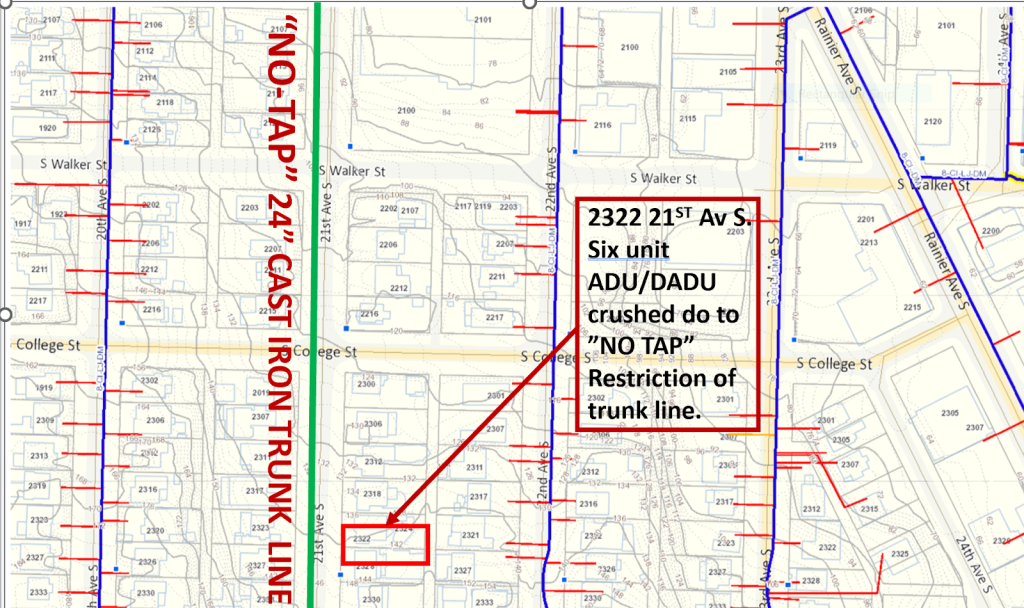
After the applicant asked if there were any solutions, SPU then acted as the benevolent savior of the project, by responding with a condition for access to the public water system. A tap into the 24-inch main would be allowed after all, if the applicant paid for the design, procurement, and installation of a made-to-order fabricated 24-inch water valve.
The valve had no effect on the integrity of the pipe for tapping. Why the initial WAC was issued stating the water main was unsuitable for tapping has not been explained. It is suitable and can be tapped for new domestic water service.
At this point the project proponent abandoned the project. The inconsistency of SPU designating the pipe as no-tap and then back-tracking and saying it can be tapped after all if a costly (maybe $100,000 plus) water valve is paid for and installed is troublesome and inconsistent. Plus, SPU’s lack of transparency makes it very difficult for developers to anticipate costs and proceed with investments, especially small developers with little margin for error or unexpected costs.
What’s changed: Prior water availability director’s rule
Water availability forms are to provide evidence of adequate water supply in accordance with Washington State law RCW 19.27.097(1)(a), which requires water purveyors to provide said evidence. Accordingly, a previous Director’s Rule CS-101 stated the purpose of a Water Availability Certificate is to provide information on the SPU water system only. Evidence of the water supply was conveyed by providing pressure zones and fire hydrant fire flows.
However, SPU’s current Director’s rule WTR-440 includes verbiage that drifts from the limited purpose of a Water Availability Certificate. Instead this newer rule states that system improvements are required for a development project to receive water from SPU’s distribution system. Furthermore, the transparency of information previously provided, i.e., fire hydrant flow and pressure zone are no longer included within WTR-440.

Access to water is a right per Washington State Law (RCW 35.92.025). It is not a condition that one must pass muster via a gauntlet of unsubstantiated conditions created by an overzealous agency. Only charges proportional to the impact of the new development can be made to offset the cost of providing new water services. These charges must be established by ordinance per RCW 82.02.050(1)(b).
Accordingly connection charges have been established by the Seattle City Council via ordinance and are provided in the below schedule. The greater the needs of the project, the greater the charge. Based upon the needs of the project and via this graduated fee schedule, each project pays an equitable share for new water service.
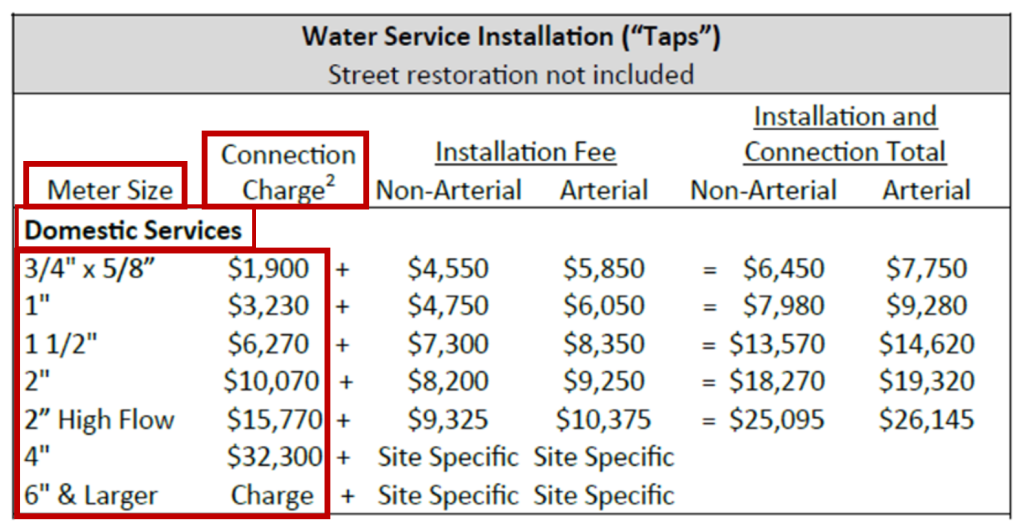
There are several RCW’s that protect the interest of person(s) seeking new water service. However, none of these applicable RCW’s are harmonized into or referenced within WTR-440. Per RCW 35.02.025 and RCW 82.02.050(1)(b), an equitable or proportionate share can be charged based upon the impact the project has on the water system, not a random requirement of some overall participation via unrelated public system upgrades. Again, SPU actions are aimed at protecting the interest of the agency as opposed to ensuring the rights and interests of the public are protected.
Requiring payment via a capital system improvement is defined as an indirect fee and is specifically prohibited per RCW 82.02.020. Charging both connection fees and payment of system upgrades is “double-dipping,” i.e. collection of duplicate fees. Collection of duplicate fees is specifically prohibited per RCW 82.02.050(1)(c).
Another mandate for an unnecessary water system installation
Below is another example of how egregious SPU has become by ignoring the limitations of our RCW’s and instead asserting these Director’s Rules are the controlling documents. A two-lot short plat project that needs one new water meter, is being required to install $350,000 of new water main as a condition of access to the public water system. This despite the fact that there is an existing water main available within SW Elmgrove Street.
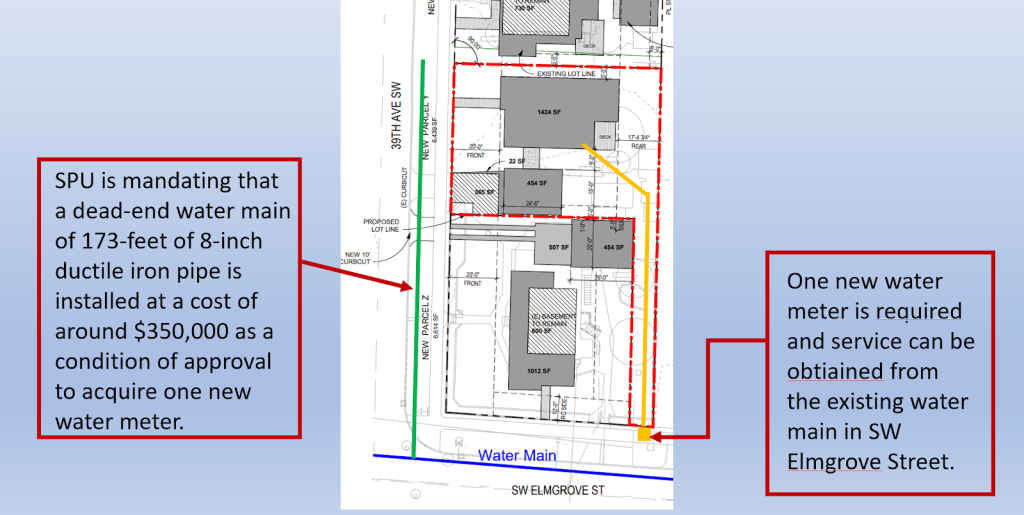
The applicant for the two-lot short plat has pursued the Utility System Dispute process to no avail. The Utility System Dispute Process is administered by SPU, typically making it a no-win situation for a project proponent.
The response from SPU included two reason to deny service from the water main in Elmgrove Street
- “The flag lot configuration has the effect of avoiding the water main extension”.
- “WTR-440, Section VI.C.3.c applies when parcels are divided or adjusted in a way that has the effect of avoiding a water main installation or other appurtenance requirement. There is no discretion in the application of this rule.”
To assert anything about the geometry of lots within a water system administrative document conveys a blatant disregard for the limitations per the Seattle Municipal Code. Lot configurations and any limitations thereof are included in the Seattle Municipal Code Chapter 23. Any restrictions about lot geometry must be included within the SMC, not hidden within an administrative document. Again, SPU has placed absurd requirements within an administrative document and has circumvented the due process of the legislative review via the City Council.
SPU has no authority to place limitations for access to a public water main based upon a lot configuration and assert the lot configuration is a reason to deny access to water service. It is simply one more of many non-code supported assertions SPU has created to deny access to public water in an attempt to extract a disproportionately costly and unnecessary public water system installation as a condition of access to water.
SDCI, who, among other services, oversees sanitary sewer and storm water services, suggested the flag-lot configuration as means of access to existing sewer and storm water for the new lot. The flag lot configuration is intended to provide a means to access all public utilities in Elmgrove.
These insidious Director’s Rules undermine the trust expected of an agency responsible for development services and permitting. It is the duty of a public water purveyor to provide service to everyone in accordance with the law, thus protecting the interests of the public. Whether a customer is a developer seeking new water service or an existing water service customer, any person has the right to access water without being required to provide disproportionally costly upgrades. The net effect of doing so is a drag on housing, particularly smaller “missing middle” type projects that cannot shoulder the burden and spread it across more homes.
SPU has created their own policy within Director’s Rules with no accountability and ignored the overarching rules-of-law to ensure that utility services are available to everyone. They have created a system that preys upon homebuilders to extract capital improvement system upgrades as a condition of access to public water.
SPU policies and the permitting hurdles have resulted in chewing through and spitting out many contractors and developers trying to build housing in Seattle. A 37% success rate for new ADU building permits from 2017 to 2021 is shockingly low. Seattle relies upon contractors and developers to build much needed new housing. The two developers for the two projects I included in this article do not intend to return to Seattle. They have already been burned and don’t desire to repeat the experience. One is in litigation with SPU over these costly water main requirements.
Director’s Rule WTR-440 does not demonstrate compliance with the overarching state laws or the limitations of the Seattle Municipal Code. It must be immediately rescinded if there is any hope at providing middle-income housing that was celebrated as the outcome we would see from the heralded 2019 ADU reform legislation.
Editor’s note: A spokesperson for Seattle Public Utilities provided the following statement: “Seattle Public Utilities (SPU) disagrees with Ms. Breske’s characterizations. SPU will not comment further at this time as one of her clients has a pending lawsuit challenging the City’s water main extension requirements.”

Donna Breske (Guest Contributor)
Donna Breske is a licensed Professional Engineer in the State of Washington. She owns Donna Breske & Associates and with her staff provides land use consulting and civil engineering design for numerous infill projects within multiple jurisdictions in the Puget Sound Area. She has a Bachelor of Science in Civil Engineering from the University of Washington and an MBA from Seattle University. She is married to her husband Fred with whom they share two adult children. She grew up in Seattle and is passionate about eliminating absurd impediments from permitting departments and ensuring consistent and predictable outcomes.

